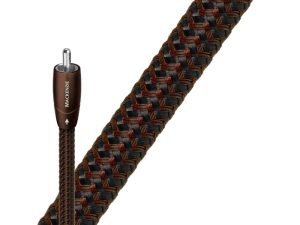Audioquest Monsoon C13
495,00 $ – 1,470,00 $
Description
3-Pole Low-Impedance and Noise Dissipation AC Power Cable
High-Purity Perfect-Surface Copper+ (PSC+) and Long-Grain Copper (LGC) Conductors Genuinely Concentric Conductors Reducing Strand Interaction and Magnetic Confusion RF/ND-Tech (US Patent # 8,988,168) Zero (No) Characteristic Impedance Direction-Controlled Conductors
High-Purity PSC+ and LGC Genuinely Concentric Conductors Monsoon primarily utilizes conductors composed of High-Purity Perfect-Surface Copper+ (PSC+), even though the conductor core is made of Long-Grain Copper (LGC). This combination of high-quality metal and conductor geometry significantly reduces ear-fatiguing Transient Intermodulation (TIM) distortion.
Uncompressed Current Transfer While many AC power cables feature low DC resistance to meet the demand for high current, a cable’s characteristic impedance is also crucial for optimal performance. Unlike most AC power cables that restrict or compress an audio transient, AudioQuest AC power cables combine low DC resistance and a characteristic impedance of Zero (none) to provide uncompressed high-intensity transients on demand.
RF/ND-Tech (Patented Radio-Frequency Ground-Noise Dissipation) Minimizes Circuit Misbehavior by Canceling Induced RF Noise AC ground wires can offer protection against electrical short circuits but also act as antennas. Consequently, they are susceptible to induced radio-frequency (RF) noise. This RF noise bypasses component power supplies and is typically directly coupled into a system’s most sensitive audio/video circuits. AudioQuest’s RF/ND-Tech significantly reduces this distortion, delivering unmatched levels of noise dissipation across the broadest radio frequency bandwidth possible. Our unique circuit topology uses a common-mode phase-cancelling array, along with exclusive dielectric materials that provide additional differential linear filtering. U.S. Patent #8,988,168.
Directionality All drawn metal strands or conductors have an asymmetric, and thus directional, grain structure. AudioQuest manages the resulting RF impedance variation to ensure that noise is dissipated in a way that minimizes distortion. The correct direction is determined by listening to every batch of metal conductors used in each AudioQuest audio cable. When applicable, arrows are clearly marked on the connectors to ensure superior sound quality. For most AQ cable models, the arrows not only indicate the direction that optimizes metal directionality as part of Noise Dissipation but also indicate the asymmetric attachment of the shield and ground to optimize full-system performance.




